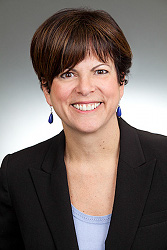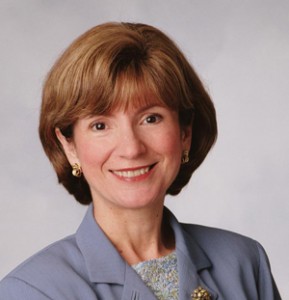Posted by Elena del Valle on June 19, 2013
By Edward M. Bury, APR

Edward M. Bury, APR
Photo: Edward M. Bury
The numbers are astounding. And, as you read this, they continue to grow. And grow.
The subject in question is the online communications medium once known as a “weblog,” but much better known today as a blog.
Want some statistics? A site called Worldomenters.info reports that more than 3 million new blog posts are published daily. WordPress, a very popular open source platform content management system reported that it registers around 100,000 new bloggers each day.
Read the entire Four Tasks to Take On Before Launching a Business Blog
Posted by Elena del Valle on April 24, 2013
By Viola Sanchez
Southeast Division, Vice President
PS Business Parks

Viola Sanchez, vice president, Southeast Division, PS Business Parks
Photo: PS Business Parks
I am a woman. This is not a new found realization or one that should come across as a monumental statement. However, in my line of work, commercial real estate, it still remains a pejorative point of differentiation, albeit less so in recent years. Nevertheless, it is time we move past false rhetoric and forge a future of equality based on factual data and a little “women’s intuition.”
Commercial real estate and its myriad of sectors and nuances make for a fascinating field. Recently women have begun to enter the industry in earnest and currently account for 43 percent of the workforce. However, many have yet to reach the higher ranks of leadership.
Click to read the entire article Why Women Should Dominate Commercial Real Estate
Posted by Elena del Valle on October 24, 2012
By Nivene Judeh
Blogger, It’s Economic

Nivene Judeh, blogger, It’s Economic
It appears there’s some confusion about the meaning of “poverty.”
According to a new TNS Omnibus study for CashNetUSA (www.cashnetusa.com/do-you-consider-yourself-to-be-poor), 25.2 percent of the 1,000 participants, or more than one in four Americans, consider themselves to be poor. But according to the 2010 U.S. census, only one in six Americans actually lives below the federal poverty line.1 So where does the discrepancy come from?
The U.S. government’s definition of poverty consists of looking at a family’s or individual’s yearly cash income before taxes and comparing it to how much money is required to meet the needs of everyone in the household.
Click to read the entire article Crossing Over the Poverty Line
Posted by Elena del Valle on August 8, 2012
An Audience Worth Reaching
By Nhora Barrera, president, TMNcorp

Nhora Barrera, president and CEO, TMNcorp
Photo: TMNcorp
There’s no question that America’s population is getting older, and it’s happening fast. Nearly 11,000 Americans turn 65 everyday 1. This aging population, however, isn’t homogenous. It is a demographic that reflects the nation’s growing diversity and challenges us to rethink how we reach them with information that will benefit their quality of life and health.
Hispanics seniors are a perfect example of this challenge. In 2008, there were 2.8 million Hispanics over 65 in America. But in just seven years, the group is predicted to be America’s largest elderly ethnic group.2 This number will only increase as the number of Hispanic-Americans continues to grow.
Read the complete article at Hispanic Seniors: An Audience Worth Reaching
Posted by Elena del Valle on May 23, 2012
Would You Trust a Machine With Your Brand’s Reputation? Technology is Great, but Successful Cross-Cultural Communication Requires a Human Touch
By George Rimalower
President of ISI Translation Services

George Rimalower, president, ISI Translation Services
Photo: ISI Translation Services
Earlier this year the Malaysian Defense Ministry was mocked worldwide when its English translation errors went viral via social media.
Its staff dress code, published online, warned against “clothes that poke eye.” The history section of the ministry’s website explained: “After the withdrawal of British army, the Malaysian Government take drastic measures to increase the level of any national security threat.”
Anyone who’s had a cross-cultural experience of any kind has likely had at least one moment of absurd misunderstanding. In a personal situation it can be funny. In a business setting, it can be damaging.
Click to read the entire article Why not to trust a machine with the reputation of your brand
Posted by Elena del Valle on May 2, 2012
Why marketers need to realign their current Hispanic digital practices to better engage this consumer
By Maria Lopez-Knowles
President
GlobalHue Latino

Maria Lopez-Knowles, president, GlobalHue Latino
Photo: GlobalHue Latino
Early on in the digital age, some brands realized that the online Hispanic market was a key growth opportunity for their products and services, and decided to expand their web presence to engage this segment. Many assumed (and continue to assume) that since most of their other Hispanic marketing was done in Spanish that it made perfect sense to build out their corporate websites to include a Spanish-language only site; sounds reasonable.
Many companies developed their digital ecosystems (including Spanish-language content/site) with the hopes of driving greater engagement, e-commerce and advocacy via their online Hispanic consumer base. Some have been confounded at their results to date; many, completely disappointed.
Click to read the entire article The digitally savvy English language Dominant Hispanic
Posted by Elena del Valle on March 14, 2012
By Roshini Rajkumar
Speaker, Roshini Performance Group

Roshini Rajkumar, speaker, Roshini Performance Group
Photo: Roshini Performance Group
Leave Things As You Found Them
If the overhead compartment was closed before you used it, re-secure it after you’re done stowing your carry-on items. This also applies when you attend business functions or meetings. Do you find some people don’t even clean up after themselves when they eat or take a coffee break? Leave shared business spaces as you found them; bonus points for leaving those spaces in better shape than how you found them.
Click to read the entire Business Etiquette on Land and in the Air
Posted by Elena del Valle on February 29, 2012
By Debra L. Ness
President, National Partnership for Women & Families

Debra L. Ness, president, National Partnership for Women & Families
Photo: National Partnership for Women & Families
In last month’s State of the Union address, President Obama gave a powerful and resonant speech, issuing a ringing call for fairness, fair play and equal opportunity in our workplaces and our health care system.
President Obama was right. At this time when millions of people in this country are struggling, Congress must stop the political battles and instead advance the fair pay, job creation and other critical initiatives President Obama discussed — because they are the initiatives America needs.
As we work to create more jobs, we must ensure that new jobs pay fair wages and provide basic family friendly supports like paid sick days and paid family and medical leave. Right now, too many workers can lose pay or be fired just for taking time off to recover from illness or care for a sick child. Latino workers confront this reality at disproportionate rates: nearly 12 million Latino workers – almost 60 percent of the Latino workforce — don’t have a single paid sick day to use to recover from common illnesses. Many more lack paid sick days to care for a sick child, forcing them to make the terrible choice between leaving a sick child alone or sending him or her to school, or losing a paycheck or possibly even a job. A paid sick days standard would help to alleviate these choices for millions of families.
Read the entire In 2012, We Can and Must Do Better
Posted by Elena del Valle on February 22, 2012
By Tony Malaghan
Chief Executive Officer
Arial International

Tony Malaghan, CEO, Arial International
The “Great Recession” has had an impact on us all in one way or another and with businesses across all industries struggling in the face of an economic climate not seen since the Great Depression, what better way to grow your business than tap into a market of 50.5 million people, with a purchasing power of more than one trillion dollars right at your own back door! A great majority of businesses however, appear to be overlooking the US Hispanic market with few companies proactively targeting this segment of the market in a strategic and culturally appropriate manner.
According to the US Census Bureau 2010 Census data, 308.7 million people reside in the US, of which 50.5 million (or 16%) are of Hispanic origin. This is an increase from 35.3 million in 2000 when this group made up 13% of the total population. That’s an increase of 15.2 million between 2000 and 2010, and accounts for over half of the 27.3 million increase in the total population of the United States. Put another way, the Hispanic population grew by 43%, which is four times the growth in the total population at 10%.
I can hear you saying, there is no denying the population growth of this segment of the market, but hasn’t the US Hispanic market been impacted just as much, if not more, than the general market by recessionary forces? It’s true that Hispanics were proportionally significant employees in those industries hardest hit by the recession, and that the Hispanic unemployment rate has been running higher than the nation’s overall rate, (Table 1).
Click to read the entire The US Hispanic Market, A Viable Acquisition Strategy in a Recovering Economy
Posted by Elena del Valle on January 11, 2012
By Alex Zylberglait
Vice president, Investments
Miami office of Marcus & Millichap

Alex Zylberglait, vice president, Investments, Marcus & Millichap
Photo: Alex Zylberglait
A 1031 exchange, otherwise known as a tax deferred exchange is a simple strategy and method for selling one property, that’s qualified, and then proceeding with an acquisition of another property (also qualified) within a specific time frame. The logistics and process of selling a property and then buying another property are practically identical to any standardized sale and buying situation, a “1031 exchange” is unique because the entire transaction is treated as an exchange and not just as a simple sale. It is this difference between “exchanging” and not simply buying and selling which, in the end, allows the taxpayer(s) to qualify for a deferred gain treatment. So to say it in simple terms, sales are taxable with the IRS and 1031 exchanges are not. US CODE: Title 26, §1031. Exchange of Property Held for Productive Use or Investment.
Click here to read the complete article 1031 exchanges as a commercial real estate investment strategy




















